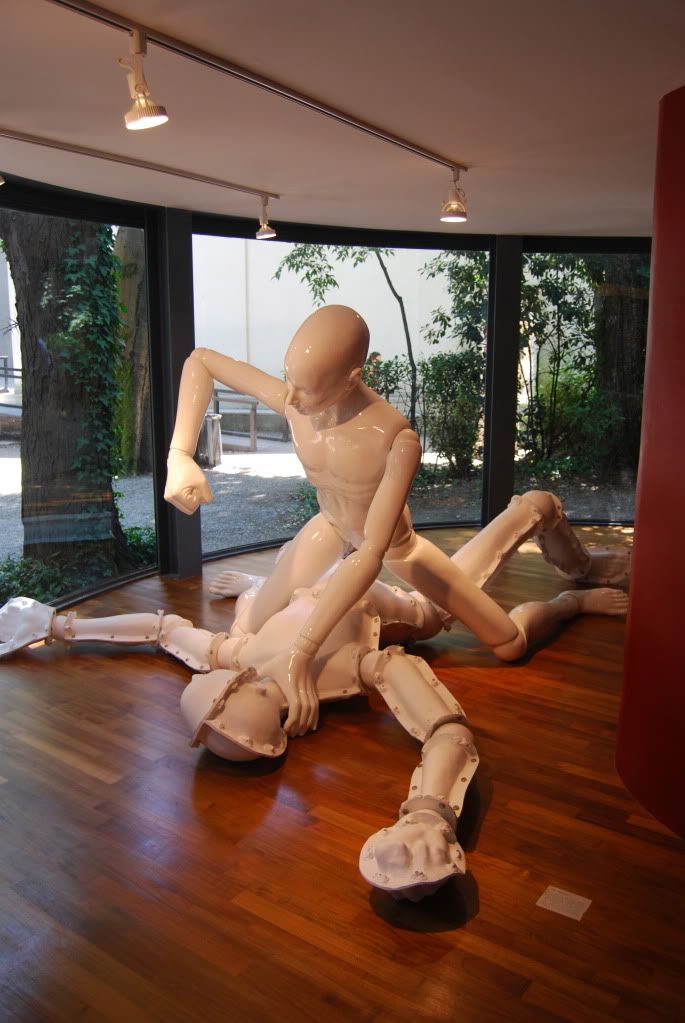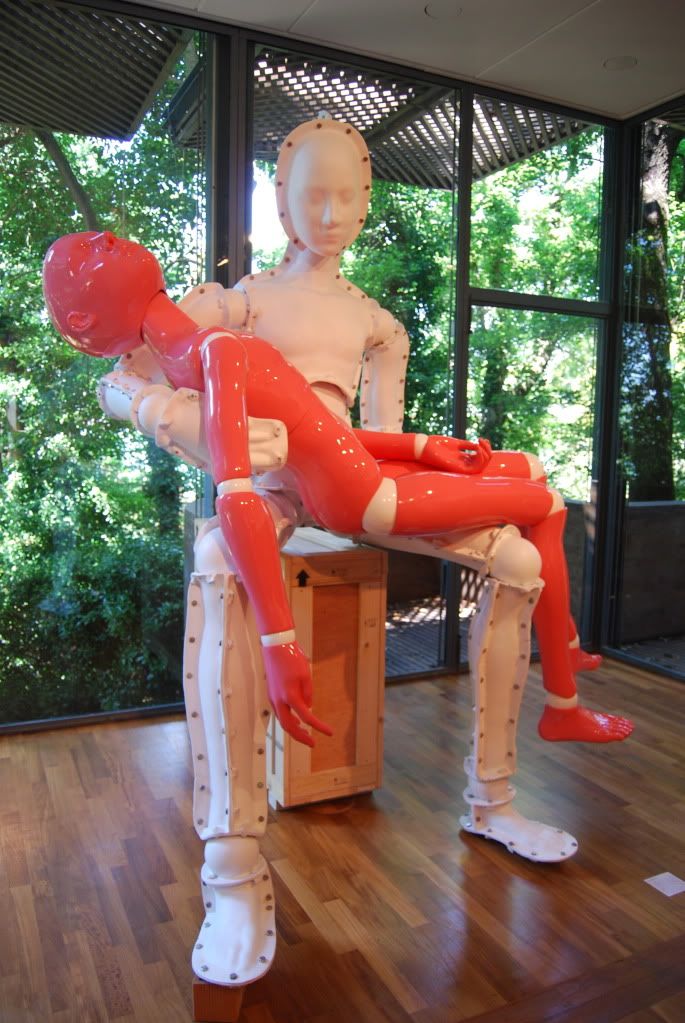At the Venice Biennale, the Korean Pavilion presented numerous multimedia works by artist Lee Yongbaek. The exhibition of which he titled, "The Love is Gone but the Scar will Heal", explores identity and existentialism in the world of contemporary societies filled with pain. Represented in a piece of his work that I found particularly interesting was called, Pieta, in which human-like cast-molded sculptures were positioned in various stances. These various stances depicted numerous themes and messages that illustrates the pain and history of Korea's modern politics, and its hope for the future.
In the above photo, 'self-hatred' is illustrated where the molded figure is found destroying the mold from which it was made.
Another stance illustrated above represented the 'sorrows of death' in my perspective where the molded figure is found carrying the mold of which it created. After doing some research, I found out that it represented 'self-death', recreating the archetypal scene of Jesus (red molded figure) and Mary (the mold). I believe Lee was trying to reference to the Biblical scriptures, "For God so loved the world that He gave His one and only Son, that whoever believes in him shall not perish but have external life." - James 3:16; hence, depicting the death of Jesus Christ, and the people's hope for the future.
- Alan, Michelle, Lindsay
Keywords: Communication, Emotion



Interesting. The first piece definitely resonates. As for his interpretation of La Pietà and self-death... I always viewed La Pietà with Mary as the main subject. The focus is on the pain of losing your own child.
ReplyDeleteMany people were affected by Jesus' death but Mary's pain at Golgotha is unique.